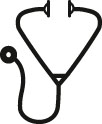Abstract

[Objective] Myelodysplastic syndrome (MDS) in children is a clonal hematopoietic stem cell tumor, according to the World Health Organization (WHO) 5th latest edition criteria for childhood MDS with increased blasts (cMDS-IB). We retrospectively analyzed MDS data from our single institute and explored the clinical biological characteristics of cMDS-IB.
[Methods] Collecting the information of patients with cMDS-IB from 2007.7 to 2022.6 in our single center. The clinical characteristics of the patients were summarized and analyzed retrospectively.
[Results] According to the criteria of WHO,55 children met the cMDS-IB standard, including 36 males and 19 females. The median age was 6 (range 1-14) years. There were 16 cases of children under 5 years old (29.0%), 25 cases ≥ 5 years old and < 10 years old (45.5%), and 14 cases ≥ 10 years old (25.5%). The median time from onset to diagnosis was 2 (range 0.2-72) months. The median white blood cell count(WBC) 3.92(range 0.77-441.48)×109/l, neutrophil count 1.13(range 0.03-31.36)×109/l, hemoglobin 75(range 45-122)g/L, lymphocyte count 2.005(range 0.54-8.05)×109/l,, platelet count 69(range 9-528)×109/l . The median red blood cell volume distribution width (RDW-CV) was 16.2 (range 12-71.1)%, (normal 11.0% Mel 14.1%) .The median value of RDW-SD was 54.7 (range 19.8-109.6) fL, (normal 39.0-46.0fL), the median of HBF was 0.035 (0.008-0.144), (normal 0.0-0.025), the median of LDH was 265.2 (77-1384) U, (normal 0.0-247.0 U) and 24 cases (43.6%) had triplet cytopenia. Two-line hemocytopenia accounted for 22 cases (40.0%), first-line cytopenia only 6 cases (10.9%), and 3 cases (5.5%) had normal peripheral blood routine. The degree of bone marrow morphological hyperplasia with active and obviously active were 47.3% (26ppm 55) and 25.5% (140.55) respectively. The median value of newly diagnosed bone marrow blast cells was 8.5% (range 5-19%). The median of peripheral blood immature cells was 1% (range 0-18.7%). Chromosome karyotype examination was performed in 49 children, normal karyotype accounted for 32.7% (16/49), and abnormal karyotype accounted for 67.3% (33/49). Among them, children with chromosome 7 accounted for 20.4% (10/49), + 8 accounted for 16.3% (8/49), and there were other abnormalities such as-17 and + 21. In children with karyotype abnormalities, the single karyotype abnormality was 63.7% (21/33), the two abnormal karyotypes were 9% (3/33), and the complex karyotype abnormality was 27.3% (9/33). MDS second-generation sequencing was performed in 32 patients, and one or more MDS-related gene mutations were found in 28 patients (87.5%). The most common mutations are PTPN11 (28.6%), FLT3 (17.9%), SETBP1 (17.9%), NRAS (14.3%), WT1 (14.3%), ETV6 (10.7%), RUNX1 (10.7%), NPM1 (10.7%), EZH2 (7.1%) and GATA2 (7.1%). ASXL1 7.1%, CBL 7.1%, and other mutations such as FAT1, CREBBP, JAK3, SETD2, SH2B3, SMAD9, TET2, TP53, etc.
[Conclusion] cMDS-IB is a rare hematological malignant clonal disease in children. The data of this study show that the incidence rate of male is higher than that of female. The median age of onset was 6 years old, and the incidence of children between 5 and 10 years old was the highest, accounting for 45.5%. Karyotype abnormalities in cMDS-IB accounted for 67.3%, of which chromosome 7 and + 8 were the most common. MDS-related gene mutations were most common, especially in PTPN11,FLT3, SETBP1. In this study, due to the limited number of cases in a single center, we need to further accumulate the number of cases to refine the clinical biological characteristics.
Disclosures
No relevant conflicts of interest to declare.
Author notes
 This icon denotes a clinically relevant abstract
This icon denotes a clinically relevant abstract
Asterisk with author names denotes non-ASH members.

This feature is available to Subscribers Only
Sign In or Create an Account Close Modal